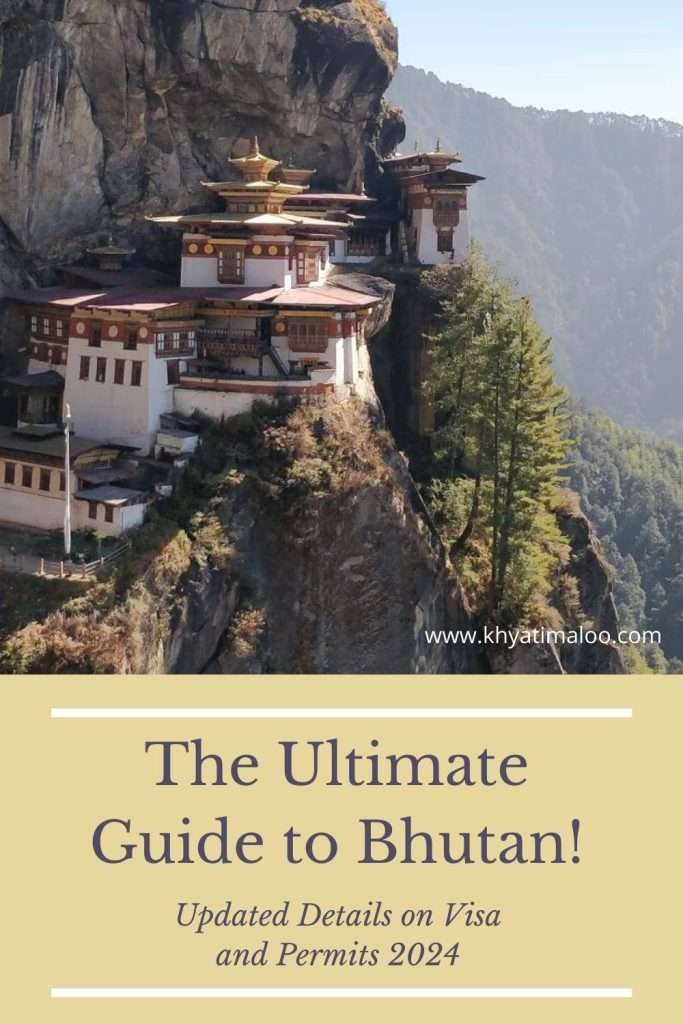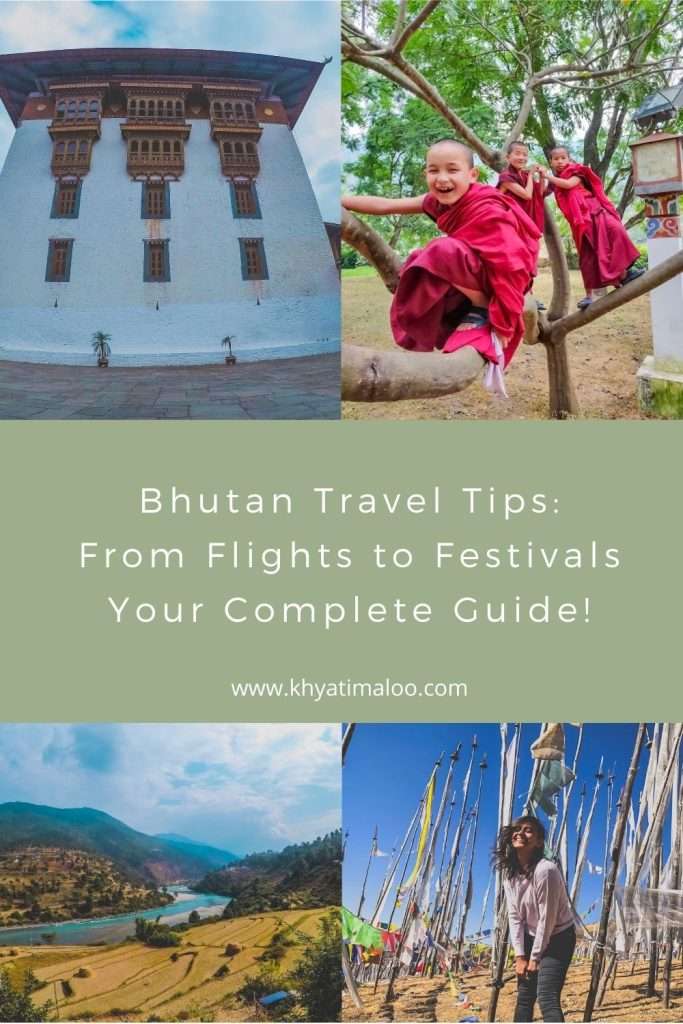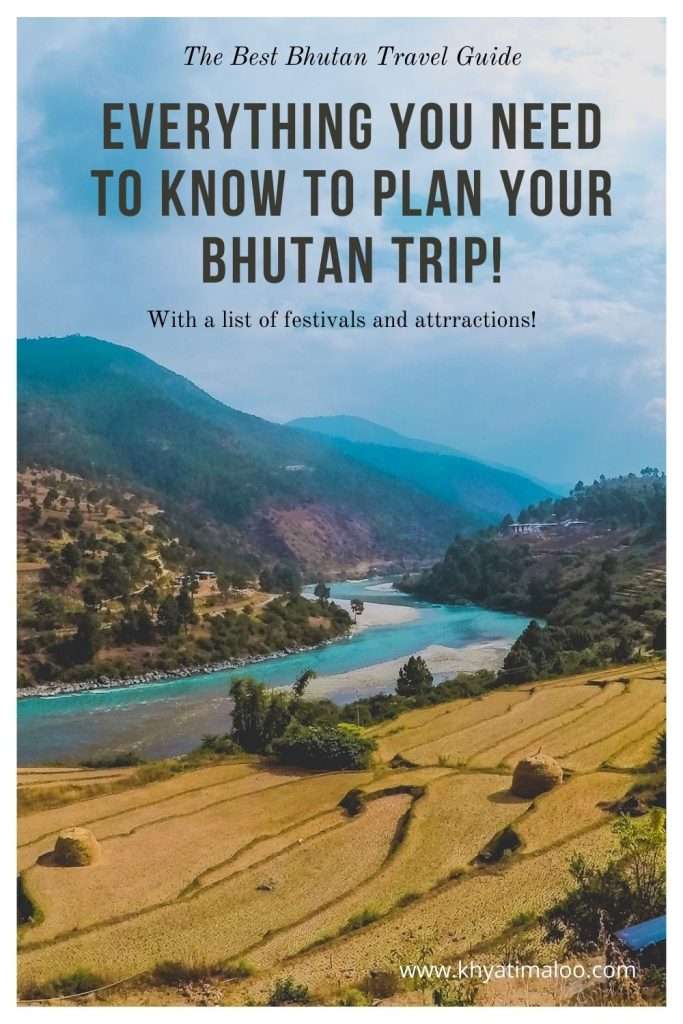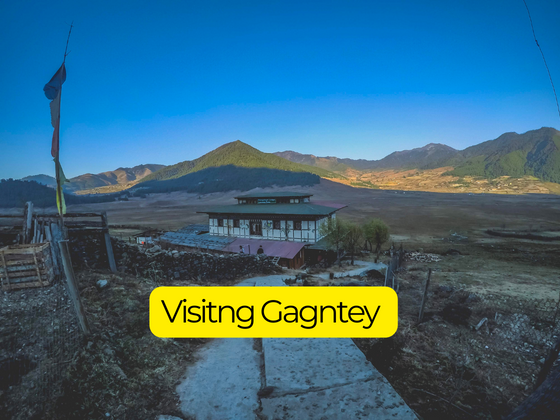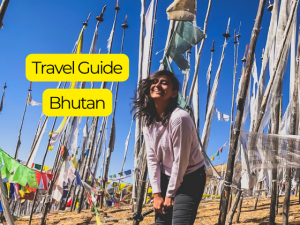
Bhutan Travel Guide
When the idea of a Bhutan vacation took root in my mind, locking in the destination was the easy part – after all, who could resist the happiest country on Earth? However, the journey through the planning process proved to be anything but a walk in the serene Bhutanese landscape. I had a tough time figuring out how to book Bhutan flights. Then the dilemma of whether to do Bhutan with an agent or by ourselves. Finding the right agent was another daunting task, especially for someone who otherwise only travels independently! So here are present to you my Bhutan travel guide.
It has everything I learnt while planning my trip, down to the t! Some sections like the visa and permits in this Bhutan travel guide is written keeping in my Indian passport holders. However, the guide also has a list of Bhutan festivals and must-visit attractions in Bhutan that will come in handy for just about any traveller, visiting Bhutan.
How can I travel to Bhutan?
When I was planning my Bhutan trip, I searched all sorts of ticket booking aggregators only to realise that it was futile! So the first question I want to get out of the way on my Bhutan travel guide is- how can one travel to Bhutan? If you are planning your Bhutan vacation from India, there are two ways to reach Bhutan:
Reach Bhutan By Air
For an expedited and awe-inspiring entrance into Bhutan, choose to fly there. Druk Air and Bhutan Airlines seamlessly connect major Indian cities like Mumbai, Delhi, Calcutta and Bagdogra to Paro in Bhutan.
For our Bhutan vacation, we chose to take a flight from New Delhi to Paro Valley. While it may incur a slightly higher cost, the saved time and the breathtaking aerial views of the Himalayas make it a worthy investment in your Bhutan vacation.
The only way to book tickets is on Druk Air and Bhutan Airlines’ official websites. Although the website isn’t very user-friendly. You have to keep trying and after a gazillion turns and heaps of luck your booking will go through! The easy way out is to book via a tour operator. We got our tickets booked via Mr Manish from Blissful Holidays.
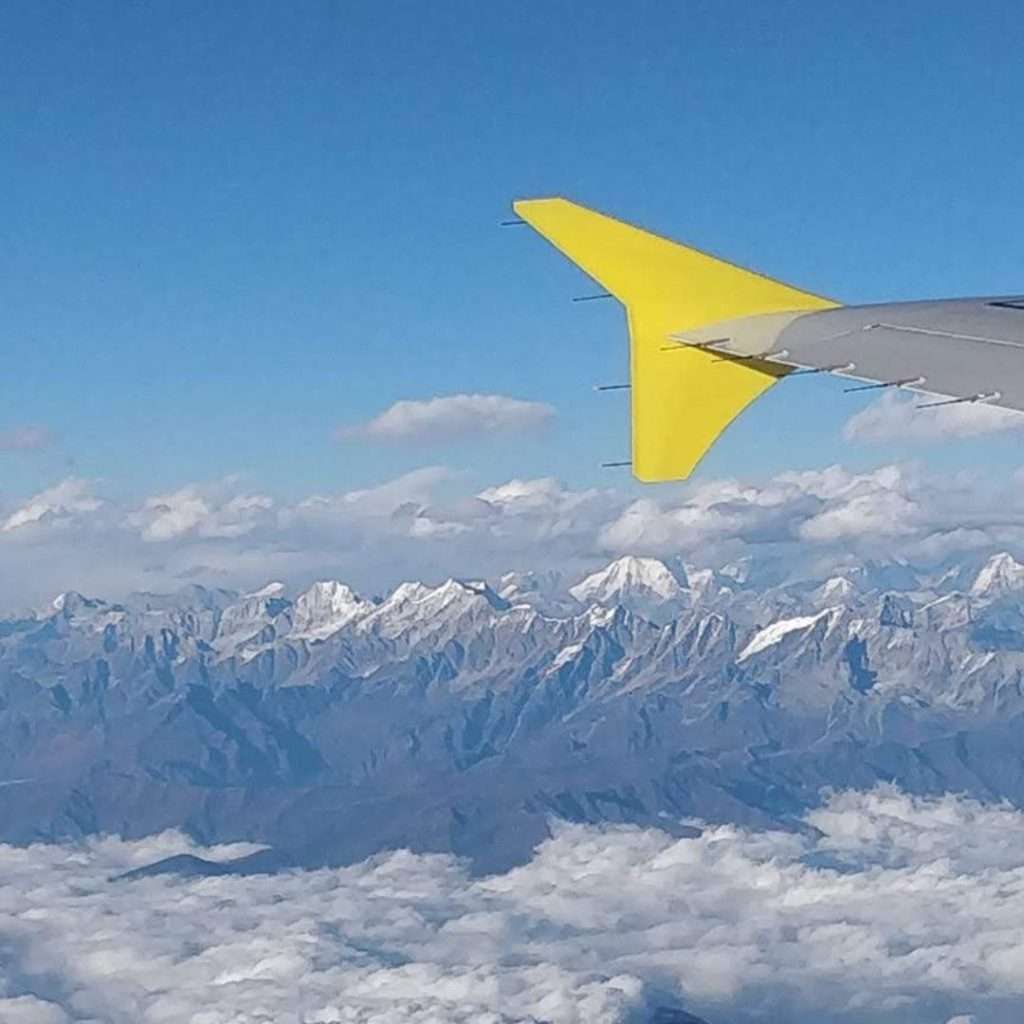
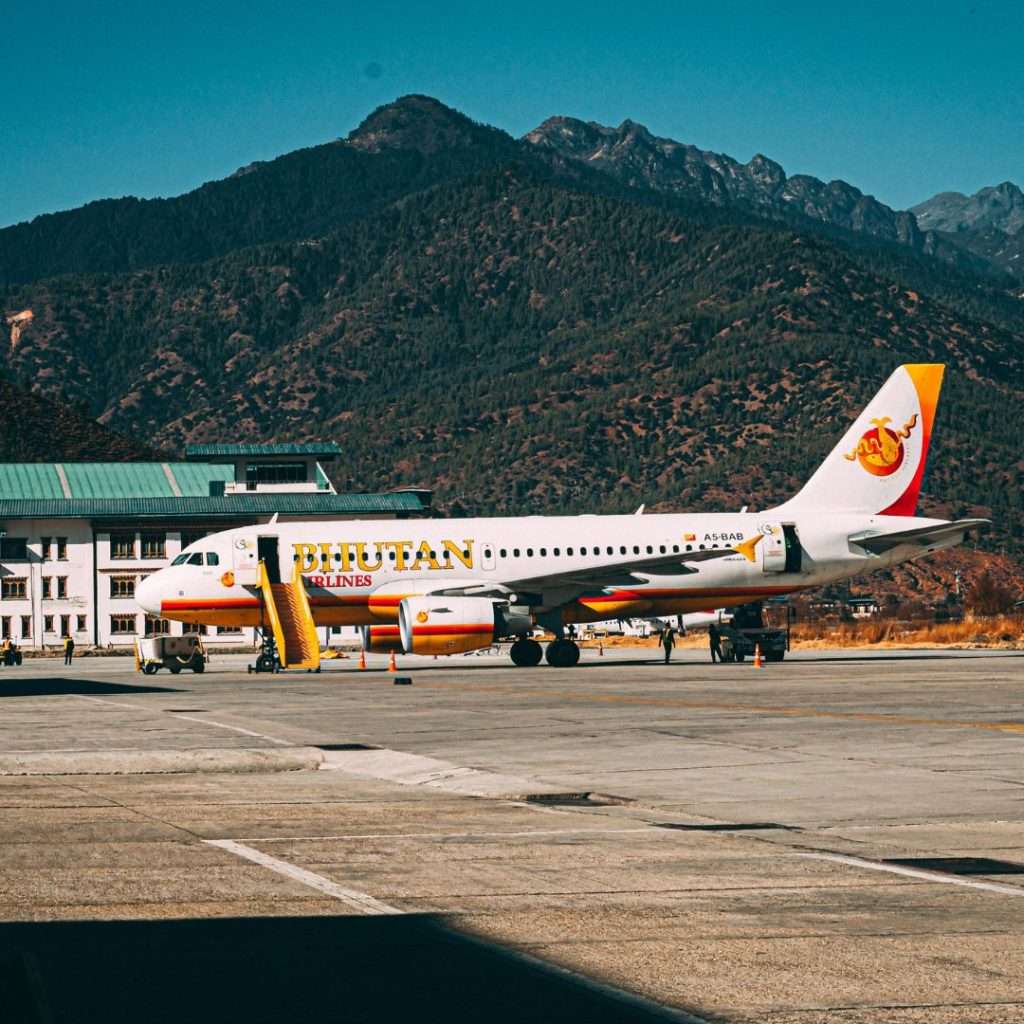
Reach Bhutan By Road
If you’re enticed by the road less travelled, Bhutan Tourism has you covered with an option to enter by road. Drive or arrange private transport from Jaigaon to Phuentsholing, or opt for a scenic bus ride from Kolkata.
Do I need a visa for Bhutan?
Great news for us Indians! Bhutan is visa-free for Indian passport holders. Which means Indians do not need a visa to enter Bhutan. Also, the $250/day policy doesn’t apply to us, so we can explore Bhutan on our terms. What we do need is a permit, and it’s valid for 7 days, with options for Paro/Thimpu or areas like Punakha/Wangdue.
Documents needed for travelling to Bhutan by road
Head to the Immigration office in Phuentsholing to snag your 7-day permit for Thimpu and Paro. Just bring your Passport/Voter ID, 2 passport-size photos, and details of your first hotel. The process takes 30-40 minutes. Remember, the office is closed on Bhutanese public holidays and weekends, so plan accordingly.
Guidelines for Indian-Registered Vehicles in Bhutan
For Indian-registered vehicles travelling within the designated zone. Indian-registered vehicles can move freely within the designated zone without incurring any charges.
If any vehicle goes beyond the Rinchending Check Post in Phuentsholing, a Green Tax of Nu 4,500 per day is applicable. To cross the RBP checkpoints, vehicle owners must register on the Check Post Management System (CPMS).
Required Documents
- Original Driving License.
- Original Registration Certificate (Vehicle Registration not exceeding 10 years from the date of registration).
- Vehicle Insurance.
- Vehicle Emission and Road Worthiness Certificate.
The owner of the vehicle must be the same person as the driver. If the driver and owner are different individuals, an authority letter from the owner to the driver is mandatory.
Documents needed for travelling to Bhutan by air
Flying in Bhutan is a breeze! Just have your passport and first-day hotel details. Pass through immigration, and get your passport stamped – it took us a mere 5 minutes to get our permit.
Getting extended/other permits
If you wish to extend your Bhutan trip or if you are visiting areas that require special permits, get them at the Immigration office in Thimphu. Again, the office is closed on Bhutanese public holidays and weekends. If you have planned your stay via a travel agency they will take care of all the permits.
Sustainable Development Fee for Indian Passport Holders
Starting January 13, 2024, Indian tourists need to pay a Sustainable Development Fee (SDF) of INR 1,200/person/night. Good news for the little ones – kids aged 5 and below are exempt, and those between 6-12 years get a 50% concession. If you’re visiting Samtse, Phuentsholing, Gelephu, or Samdrup Jongkhar for 24 hours, no SDF is required.
What is the best time to visit Bhutan?
The best time to visit Bhutan largely depends on your preferences and the kind of experience you’re seeking. Generally, Bhutan experiences distinct seasons, each offering unique attractions.
Spring (March to May):
Weather: Pleasant temperatures, blooming flowers.
Attractions: Ideal for witnessing the stunning rhododendron blossoms. Trekking trails are accessible.
Summer (June to August)
Weather: Monsoon season with occasional heavy rainfall.
Attractions: Lush green landscapes, but trekking conditions can be challenging. Festivals like the Haa Summer Festival occur.
Autumn (September to November)
Weather: Clear skies, cool temperatures.
Attractions: Spectacular autumn foliage, and clear mountain views. Popular time for trekking and festivals, including the famous Thimphu Tshechu.
Winter (December to February)
Weather: Cold temperatures, occasional snowfall in higher altitudes.
Attractions: Snow-capped landscapes, fewer tourists. Ideal for birdwatching and cultural experiences.
The most popular and widely recommended times to visit Bhutan are during the spring (March to May) and autumn (September to November). However, if you prefer quieter travel with fewer tourists, winter can also be a magical time to experience the serene beauty of Bhutan.
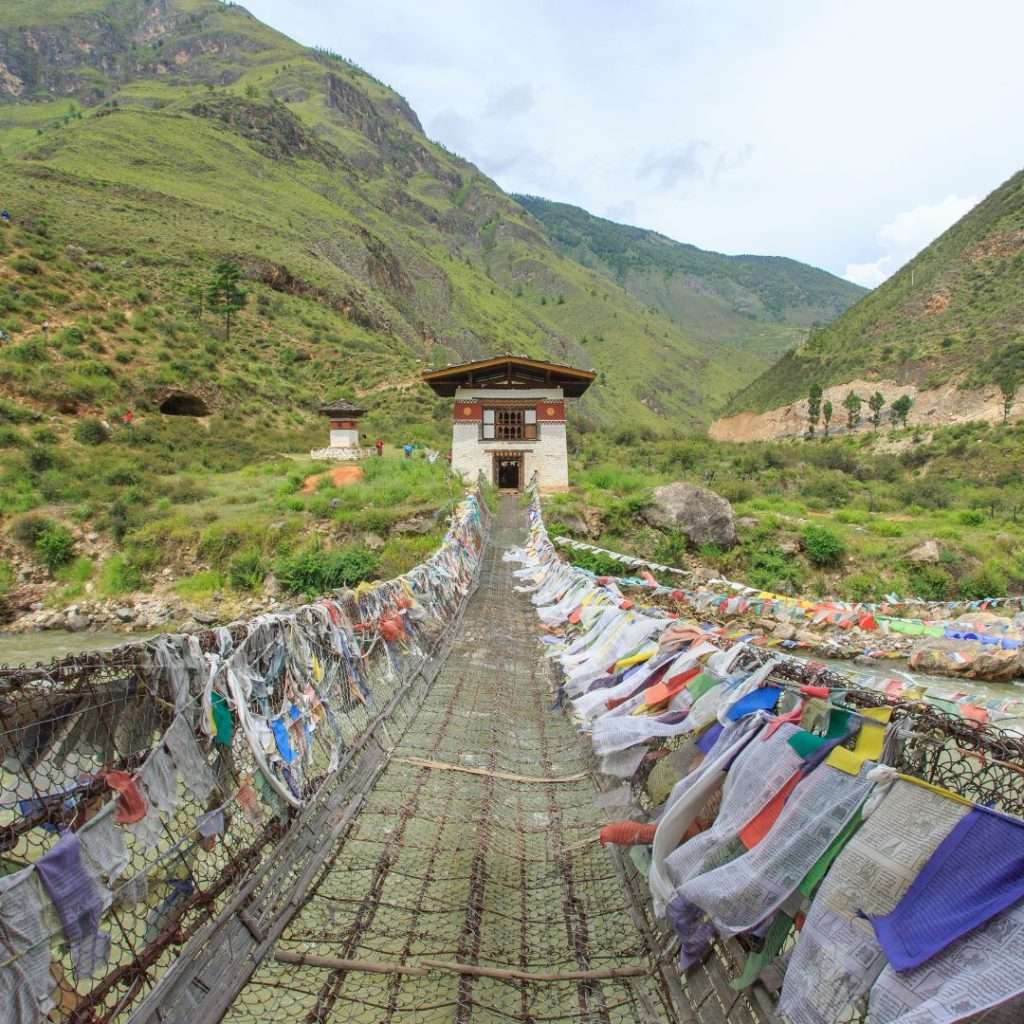
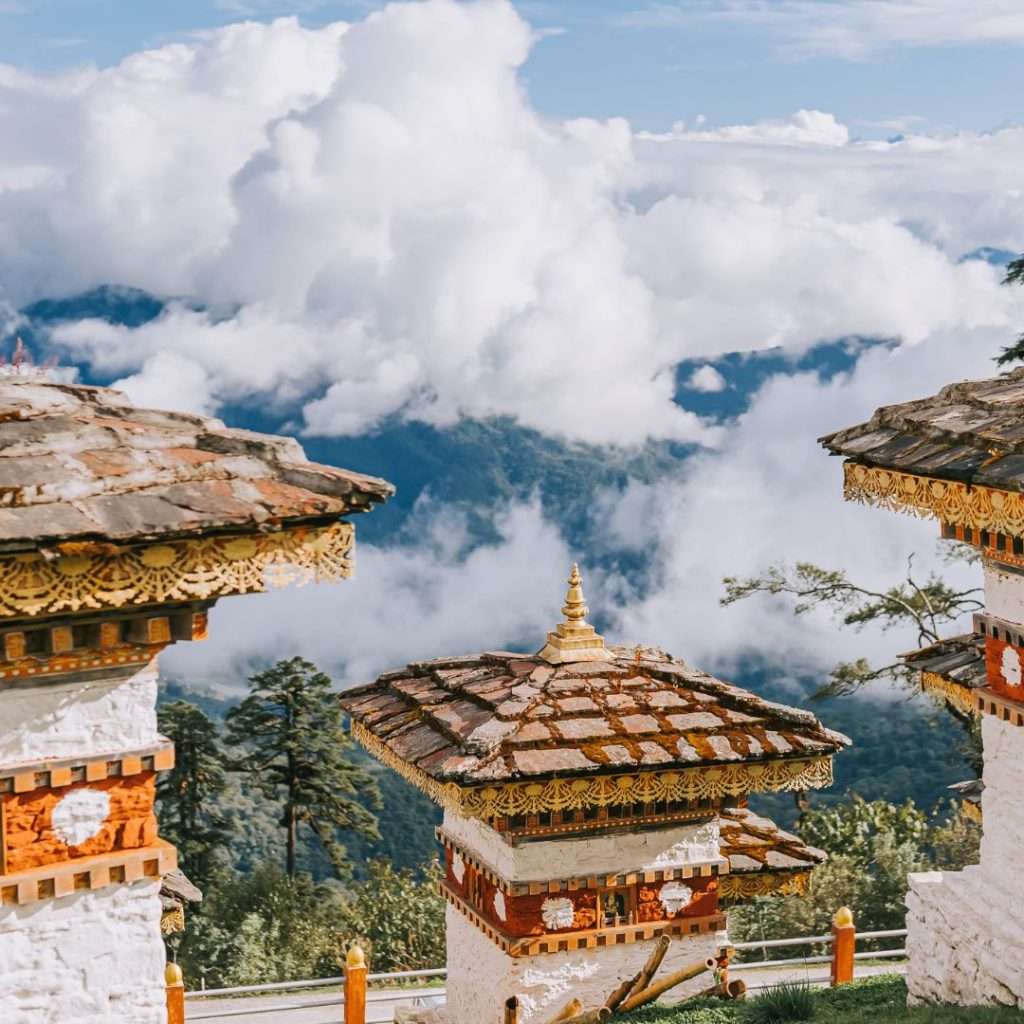
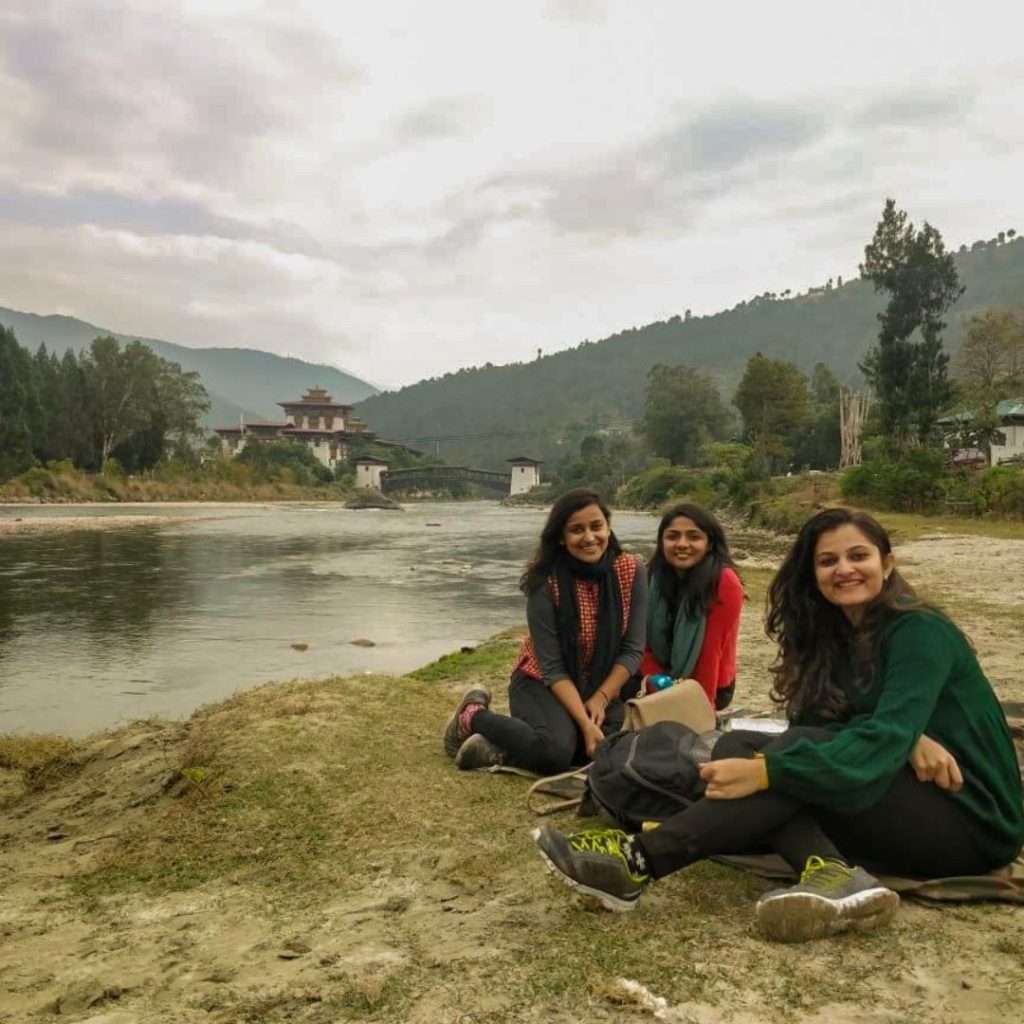
Can I travel independently or do I need a guided tour in Bhutan?
If you’ve been following my solo travel escapades on Instagram, you know I’m all about that independent journey life. The idea of a planned trip with a rigid itinerary makes me cringe. But, when I realized that the key to freely exploring Bhutan meant having a driver and a guide, I was caught in a dilemma. Tickets booked, mind made up – there was no turning back. If you are also confused, this section of my Bhutan travel guide will come particularly handy for you.
Here’s a handy list of all registered tour operators: Bhutan Tourism Directory. I stumbled upon Bhutan Happy Yul Trip Advisor on Facebook, verified them online and dialled them up.
Finalizing the plan with Mr. Dhami turned out to be a breeze. He embraced all our interests and budget considerations, crafted an itinerary, made the necessary bookings, and assured us that we could tweak the plan once in Bhutan. Simple, right?
At Paro airport, Tashi awaited us with a placard reading “Khyati Maloo.” He introduced us to Jamtsho, our driver, stowed our luggage, and off we went. “So, as per your itinerary today, you were supposed to go to the Dzong and the Big Buddha. But since it is late we will not be able to do that,” he said showing us a printout of our itinerary. I thought this trip was doomed! Only to realise later, it is far from doomed.
In a day Tashi and Jamtsho understood our interests. They become our friendly hosts and not just appointed guides! When we got bored of the monastery hopping they took us karaoke bar hopping. When we had had enough of eating in the hotel dining area they took us to the best picnic spots.
The fun trail of Gangtey, drinking Ara at the highest point in Thimphu, tripping on Bollywood songs, trying Bhutanese food and making them try Indian food. The trip wouldn’t have been the same if not for them. It was not a 7-night 8-day trip planned by a tour operator. It was an 8-day long road trip with our Bhutanese friends. 🙂
So, for all, you independent travellers, fear not. Choosing the right operator can turn your Bhutan trip into a dream. After a few chats, you’ll sense if the operator is open to changes. Sadly Bhutan Yul Happy Trip Advisor have shut shops after COVID. But, I’m sure other local operators are just as great. Before planning your Bhutan itinerary, speak to them and gauge how flexible they are and then go for it.
But, if you’re still leaning towards full independence, you’ll need wheels to roam freely. Grab a car at Thimphu market or use public transport for city-hopping, though it may limit your movement within the city. As an Indian national, you can get your registered vehicle on your Bhutan vacation, details of which are in one of the sections above.
What is the currency used in Bhutan?
The currency used in Bhutan is the Bhutanese Ngultrum, denoted by the symbol “Nu.” Additionally, Indian Rupees (INR) are widely accepted and used in Bhutan.
1 INR = 1Nu
If you have booked via an operator all your stay will be paid for. You can also opt for different meal plans – breakfast included, breakfast and lunch included or all meals included. Which leaves you with very little money to carry (depending on your travel style).
A meal could cost you anywhere from INR 300 and upwards. Beer at a bar will cost about INR 110 and Zumzin (wine) will be around INR 240. All these beverages are much cheaper at a wine shop.
What are the major tourist attractions in Bhutan?
All excited about your Bhutan vacation? Well, get ready to dive into the wonders of Bhutan’s best sightseeing spots! In my Bhutan travel guide, I’ve rounded up the top 10 must-visit attractions that’ll make your trip an absolute delight.
1. Tiger’s Nest Monastery (Paro Taktsang)
Perched on a cliff, this iconic monastery is one of Bhutan’s most famous and sacred sites. The trek to Tiger’s Nest offers stunning views of the surrounding mountains and valleys.
2. Punakha Dzong
Punakha Dzong, known for its grand architecture and historical significance, majestically stands at the confluence of the Pho Chhu and Mo Chhu rivers. It served as the capital of Bhutan until 1955.
3. Thimphu
The capital city of Bhutan, Thimphu offers a mix of traditional and modern attractions, including the Memorial Chorten, Tashichho Dzong, Buddha Dordenma Statue, and the vibrant weekend market.
4. Dochula Pass
A scenic mountain pass adorned with 108 stupas, offering panoramic views of the Himalayas on clear days. It’s a popular stopover en route to Punakha or Wangdue.
5. Gangtey Valley and Phobjikha Valley
Known for its stunning landscapes and the Gangtey Monastery, Gangtey Valley is also a winter home to the endangered black-necked cranes. Phobjikha Valley, adjacent to Gangtey, is a conservation area for these migratory birds.
6. Bumthang Valley
Comprising four valleys (Chokhor, Tang, Ura, and Chhume), Bumthang is rich in history and cultural sites, including Jakar Dzong, Jambay Lhakhang, and Kurje Lhakhang.
7. Rinpung Dzong (Paro Dzong)
A fortress and monastery with a rich history, Rinpung Dzong is known for its stunning architecture and is a venue for the Paro Tsechu festival.
8. National Museum of Bhutan
Located in Paro, the National Museum provides insights into Bhutanese history, art, and culture. The museum is housed in a traditional watchtower called Ta Dzong.
9. Chele La Pass
One of the highest motorable passes in Bhutan, offering spectacular views of the Himalayan range. It’s a great spot for photography and a peaceful escape.
10. Haa Valley
A serene and less-visited valley known for its picturesque landscapes, traditional villages, and the annual Haa Summer Festival.
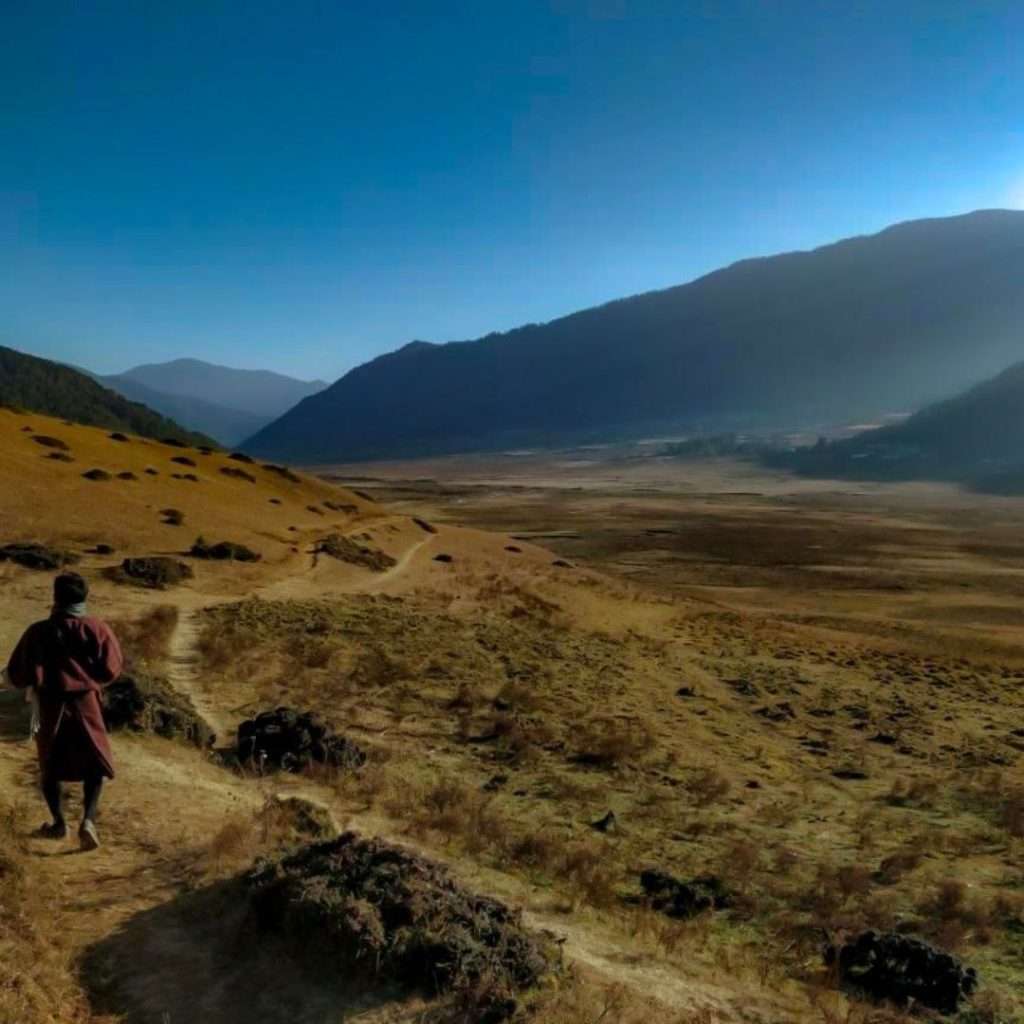
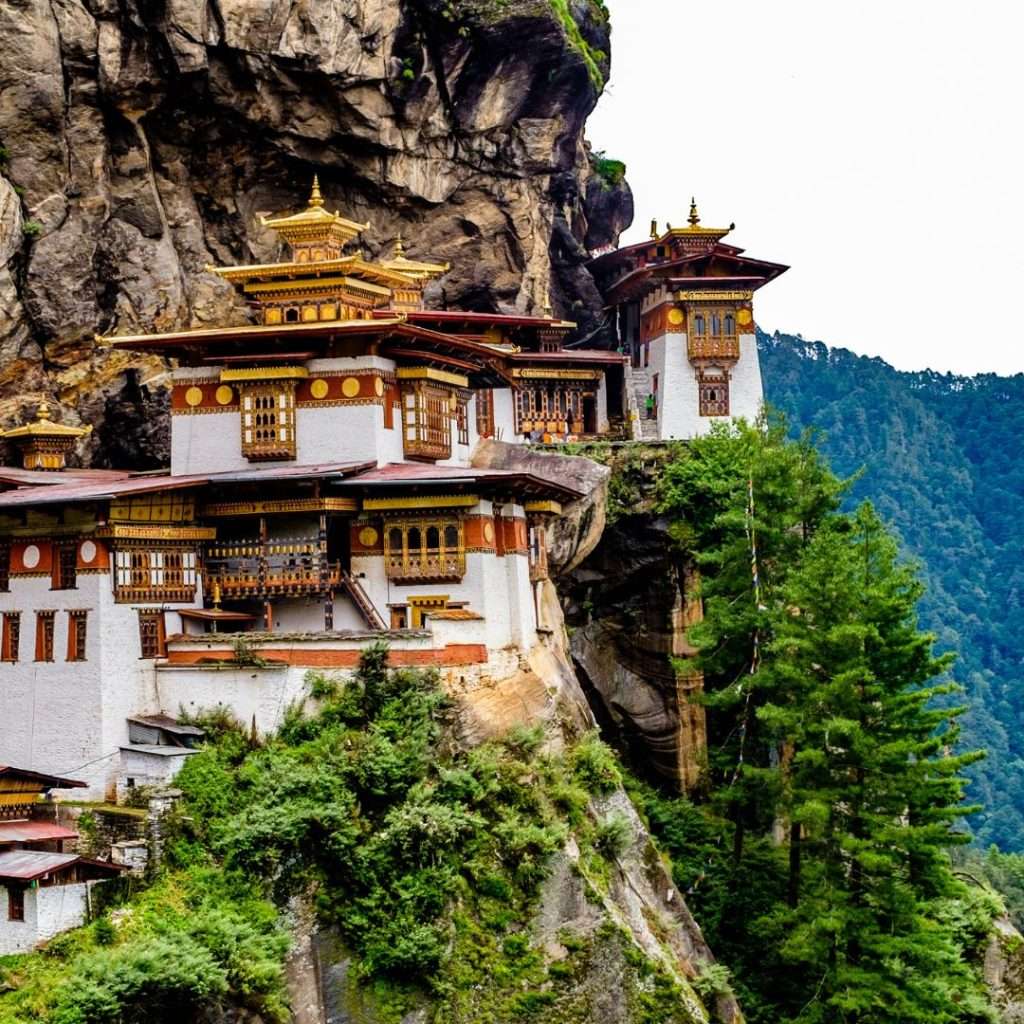
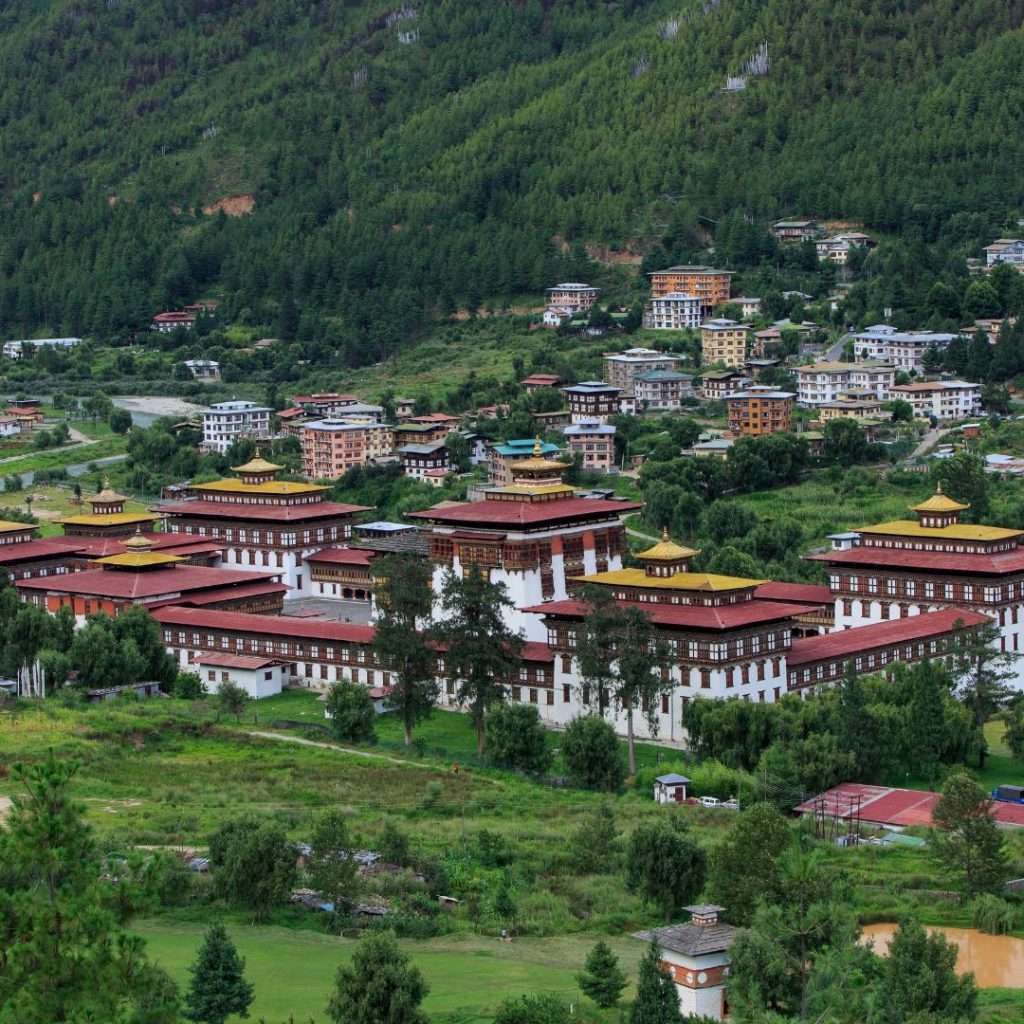
Are there any festivals happening during my visit to Bhutan?
1.Paro Tsechu (March or April)
Paro Tsechu is one of the most significant religious festivals in Bhutan, featuring masked dances, traditional music, and colourful pageantry. It commemorates the birth of Guru Rinpoche, who brought Buddhism to Bhutan.
2. Thimphu Tsechu (September or October)
Thimphu Tsechu is the largest festival in the capital city, Thimphu. It includes masked dances performed by monks and laymen, showcasing Bhutanese cultural and religious traditions.
3. Punakha Drubchen and Tsechu (February or March)
Punakha Drubchen involves reenacting the 17th-century battle against Tibetan invaders. Following this, Punakha Tsechu celebrates the victory with vibrant mask dances and religious rituals.
4. Jambay Lhakhang Drup (October or early November)
Held at Jambay Lhakhang in Bumthang, this festival includes the famous “Mewang” – a sacred fire ceremony believed to cleanse sins. The highlight is the “Ter Cham” or naked dance.
5. Wangdue Phodrang Tsechu (September or October)
Wangdue Phodrang Tsechul showcases unique mask dances also known as Raksha Mangcham or the dance of the ox.
6. Haa Summer Festival (July)
While not a traditional religious festival, the Haa Summer Festival celebrates the unique culture of the Haa Valley with local sports, traditional music, and dance performances.
7. Nimalung Tshechu (June or July)
Nimalung Tshechu takes place at Nimalung Lhakhang in Bumthang and earns its reputation for the spectacular “Ter Cham” or naked dance.
8. Black-Necked Crane Festival (November)
Celebrated in Phobjikha Valley, this festival raises awareness about the endangered black-necked cranes. It includes traditional masked dances and crane-themed performances.
Planning a Bhutan Trip? Read also
Gangtey: Where you can hear silence
Beyond the Sky and the Earth: A Journey Into Bhutan by Jamie Zeppa
Pin the Bhutan Travel Guide!
